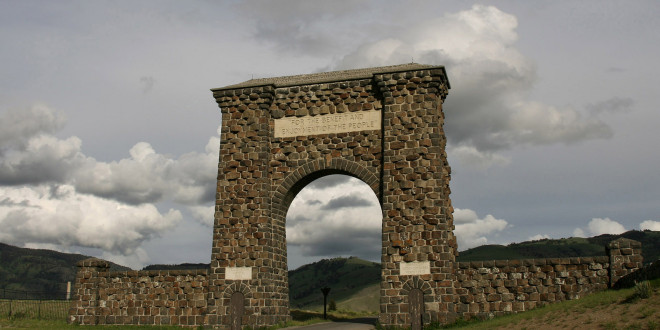A new study warns gateway communities around Yellowstone National Park could lose millions in visitor spending if the National Park Service raises entrance fees.
The study has a similar warning for Glacier National Park, which is another park where the NPS wants to raise fees.
The study, published by the University of Montana’s Institute for Tourism and Recreation Research (ITRR), found a fee increase would result in an annual loss of $3.4 million in spending in communities within 60 miles of Yellowstone National Park.
And according to the Missoulian, that revenue loss would just come from a raise in price for seven-day passes:
That’s because economist and ITRR associate director Jeremy Sage and his colleagues found that for every 10 percent increase in travel costs for travelers, including entrance fees, the number of monthly visits to the park declines by 2.7 percent when all other factors are constant, based on historical data and visitor surveys.
The dollar amount of the potential loss to communities around Glacier National Park has not yet been calculated.
According to a report from the National Park Service, visitors spent nearly $525 million in the communities surrounding Yellowstone in 2016, and $251 million in the areas around Glacier National Park that year. That means, based on the ITRR’s study, the towns around Montana’s two national parks could lose millions if the price increase takes effect.
You can read the full study here, courtesy of the ITRR.
We previously reported the NPS has proposed instituting “peak season entry fees” at 17 national parks, including Yellowstone and Grand Teton. Under the proposal, seven-day passes would rise from $30 to $70, motorcycle passes from $25 to $50, walk-in/bike passes from $15 to $30, and park-specific annual passes from $60 to $75.
The NPS is also looking to raise entrance and operating fees for commercial tour operators. The cost of an Interagency Annual Pass (which grants access to any national park in the United States) would stay the same at $80.
Interior Secretary Ryan Zinke argues this fee hike would raise revenue to help address the NPS’ maintenance backlog, valued at $12 billion.
The proposed fee hikes could potentially raise $69 million in annual revenue. Currently, 80 percent of fee revenue goes to the national park where it is collected, while the remaining 20 goes to the agency as a whole.
The NPS is holding public comment on this proposal from now through December 22, 2017.
Critics of the proposal argue such a fee increase would price people out of the park, a point that Sage and his coauthors make in the paper: “At $70, concerns may be legitimately raised that many families are being priced out of visiting the major national parks in the US.”
In support of this argument, Sage and his coauthors contend any price increase would result in a decrease in demand, which could translate into fewer visits to the national parks and/or attempts to save money by spending less in gateway communities.
In conclusion, Sage adds the impact would be most felt by Montana, Wyoming and Idaho residents. From the Missoulian:
“The effect of the price change is disproportionately felt by local visitors from Idaho, Montana and Wyoming,” he said. “Visitors from these local states currently have an average travel cost of about $106, including fuel and the entrance fee. They would see an increase of nearly 38 percent with the new fees. This obviously has a potential to create a significant hardship for many families in the local area.”
The price changes mostly will affect the local communities, he added, with U.S. citizens outside the area and Canadians seeing an average change of 14 percent and international visitors facing an average increase of only one percent.
To counter this decline, Sage et al. recommend making a full analysis of the fee proposal so “the total magnitude of effects can be incorporated into the decisoin making process.” The study also suggests using different fee systems (like those implemented in Kilimanjaro National Park in Tanzania, which has price tiers for domestic and international visitors) to meet revenue goals “without disadvantaging the American taxpayer.”
This dynamic—a possible drop in visitation due to higher pass prices—highlights another issue facing parks like Yellowstone and Glacier: overcrowding. Indeed, a pair of visitor use and traffic surveys published earlier this year show Yellowstone’s road system could be stressed to its breaking point by 2023 if visitation stays high.
Another study published earlier this year by ITRR director Norma Nickerson (who co-wrote this latest study) argues Yellowstone and Glacier should encourage visitors to visit attractions adjacent to or within range of the parks. This, Nickerson argues, would reduce stress on park infrastructure and encourage spending in gateway communities.
 Yellowstone Insider Your Complete Guide to America's First National Park
Yellowstone Insider Your Complete Guide to America's First National Park





